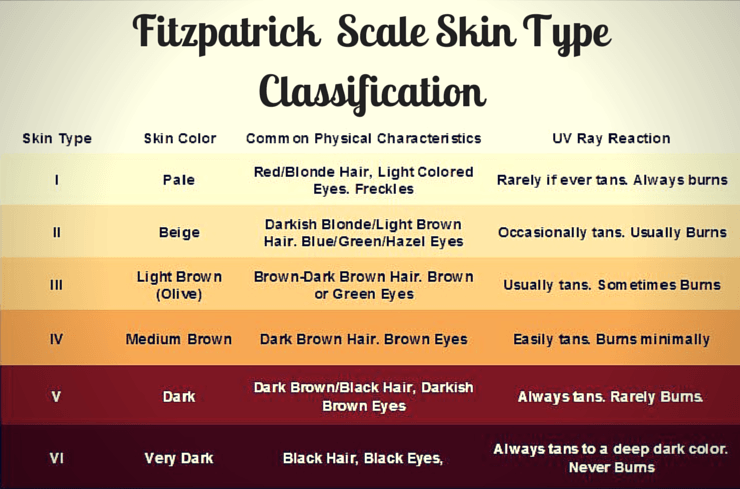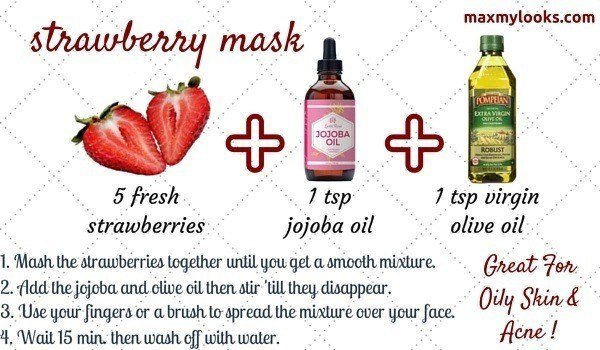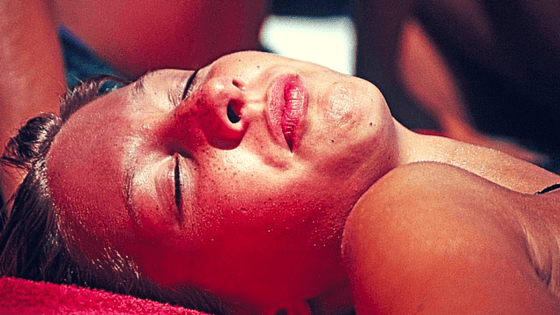Summer is here which means warm weather, beach days, and some good ol’ fashioned fun in the sun.
But if you’ve embraced the weather without making some changes to your skincare routine or the products you use expect to run into trouble.
The two biggest challenges will be protecting your skin from the heat and UVA / UVB radiation. Of course, UV rays are harmful no matter the season but increased exposure during long summer days when you’re more likely to spend time outdoors makes them particularly dangerous.
The goal, after all, is a clear face and healthy skin.
We’re going to help you attain this while making sure your skin remains safe and looks good in the years to come. Don’t sacrifice your appearance in the long-term for a temporary boost!
Just follow these skincare tips for the summer.
Tip #1 – Drink Enough Water
Let’s start with the basics. Make sure you’re drinking enough water! This is absolutely essential because when you’re sweating more than usual from the heat and experience dehydration it can show up on your skin.
This can take many forms:
- Eye bags become more prominent because the delicate skin weakens.
- Skin becomes dry and rough in appearance overall,
- Transepidermal water loss increases because it isn’t getting replaced. This means a broken moisture barrier which can take weeks for it to naturally repair.
- Elasticity decreases because skin cells aren’t working optimally. This means it looks older and has less “bounce” to it.
- All of the above factors can contribute to wrinkles and fine lines becoming more prominent on the face.
The standard is eight 8-oz. glasses of water per day. But the truth is depending on how much you sweat or whether you drink caffeine you may need up to three times as much ( or less).
So drink plenty, enough to satisfy your thirst and a then little more just to be safe.
Tip #2 – Embrace Cold Showers
While we’re on the topic of water, let’s discuss how turning down the temperature can also benefit your skin.
Taking a hot shower especially after sun exposure when your skin is already dry and sun-damaged will only make things worse. Heat strips your skin of its natural oils and will increase redness. It can also make it sting, itchy and more sensitive overall.
Cold water on the other hand boosts circulation. This makes your skin “come alive” because blood is rushing throughout your body delivering nutrients and spreading oxygen to skin tissue giving it a bright and healthy glow.
Cold water will also help tighten your skin up as the skin cells constrict and reduce the size of your pores minimizing the chance of breakouts. Since it’s not as damaging to the sebum your skin naturally produces, it’ll also help with dryness and manage symptoms of eczema or irritation and soothe sunburns.
Even a quick 10 second blast of cold water at the end of your shower can be a big help. The most important thing is to avoid hot or warm water. Stick to lukewarm at the very least.
Tip #3 – Keep A Face Mist Around
Admittedly this isn’t absolutely essential but you might find it helpful.
If you’re really feeling the heat spritz a facial mist a couple times for a refreshing cool down. Mists help hydrate your skin because certain moisturizers (more on them below) attract and hold water to the surface of your skin. If the climate’s really arid and there’s not enough humidity these won’t work as well which is why mists come in handy.
Another benefit is if you use makeup these won’t mess it up like reapplying a moisturizer can. You can also apply a mist before foundation for a smoother canvas. Using them gives dehydrated skin the water it needs to function properly.
An alternative is to simply splash your face with cool water a few times throughout the day. But the best mists are more than just fancy mineral water. They also contain emollients that help smooth out fine lines and improve skin elasticity. Keep it alongside some aloe vera and a burn relief spray to treat redness and sunburns. Maybe even some bug spray for the perfect post-outdoor-sun-relief kit.
Tip #4 – Never Skip Out on Sunscreen
You knew this was going to be here. This is the single most important tip on the entire list. Wear sunscreen! Not just on your face but your body too if skin will be exposed. And don’t forget your hands, feet, neck, ears, etc.
Sunscreens nowadays come in all kinds of forms: spray-on, gels, lotions, ointments, creams, wax sticks, and more. Just choose one and stick with it – you need daily application to preserve the youthfulness of your skin. Using it every once and a while won’t help much.
The three most important factors to look for:
- Broad spectrum. This means protection against UVA rays which cause long-term premature aging and UVB rays which are primarily responsible for burns.
- Water Resistant. Especially important for any physical activity outside or if you’ll be dipping in and out of water.
- SPF 15 at MINIMUM but preferably higher. The higher the better but this also depends on your complexion. Darker skin tones can get away with less SPF because their skin naturally produces more melanin. Note this doesn’t mean to not wear any sunscreen at all if you have a darker complexion!
Consider the chart below.
Paler skin should wear higher SPF sunscreen. An SPF of 15 blocks about 93% of the sun’s rays. For SPF 30 this increases to 97% and for anything higher you’ll get diminishing returns.
Look for physical-based sunscreens that contain zinc oxide or titanium oxide. These are safer than many chemical based sunscreens that contain dangerous ingredients like oxybenzone and avobenzone. They also don’t penetrate your pores because the size of their molecules is too large so it minimizes the chance of breakouts if you have acne-prone skin.
To supplement sunscreen, a mineral powder with SPF protection for makeup can also help control shine. Same for darker foundations and eye shadow. The problem is makeup on its own is often applied unevenly and tends to wipe off over the course of the day so its not enough on its own.
There’s a lot more to cover here so if you’re interested check out these sunscreen tips.
Tip #5 – Don’t Abandon Your Moisturizer
A lot of people figure since it’s the summer they won’t need a moisturizer at all. This might be true for some but only in very limited cases. The key is to swap those rich and heavy moisturizers and creams for a more lightweight version. Preferably one that also has some SPF protection.
You can also consider skipping the nighttime moisturizer entirely if you tend to sweat and it gets really hot. Same goes for oil-stripping astringents and toners. But during the day, as you might imagine, lighter moisturizers that are formulated to be oil-free are perfect for oily skin. Also, look for gel-based and water-based moisturizers because they tend to be the lightest and are most suitable for normal and oily skin types.
Tip #6 – Cut Back on the Exfoliation
Exfoliation can help remove dead skin cells, grease, grime, dirt, flakes, and sweat to brighten up your appearance and prevent clogged pores. But too much exfoliation is never a good thing and in the summer it’s particularly harmful.
Certain ingredients increase the photosensitivty of your skin because they remove the dead outermost skin cells and reveal the younger ones underneath which aren’t yet as resilient. This means they become more susceptible to UV ray damage, more likely to burn, and more likely to develop wrinkles over time.
Examples of exfoliants that increase sun sensitivity:
- AHAs (alpha hydroxy acids)
- Lactic Acid
- Glycolic Acid
Reduce your exfoliation sessions to 2 or 3 times per week at the maximum using a gentle facial scrub or mask. The ideal time of day would be during your PM skincare routine or right before a shower. Use the scrub on your skin while it’s still dry to slough away the upper layer paying special attention to your knees and elbows.
If you’re going to the beach skip out exfoliating entirely for a few days before because some ingredients can increase sensitivity for up to a week after application.
Tip #7 – Try A Refreshing Facial Mask
A facial mask to cool down can be just the thing your skin needs to absorb all that accumulated sweat and sebum or calm redness from the heat.
So treat yourself to an at-home facial every now and then for a hydrating boost that can also double as a mild exfoliant.
Check out our guide on DIY facial masks for some ideas using everyday ingredients you probably already have in your kitchen.
Alternatively, we have another guide that covers the different types of facial masks to help you choose the right one for your particular needs.
- Clay masks are good for absorbing oil and clearing out pores to reduce the appearance of blemishes.
- Creams can treat sunburns and irritation by soothing sensitive skin (beware if you have very oily skin!)
- For gel masks, try putting them in a fridge for 15 to 30 minutes before use for an extra cool boost.
Tip #8 – Beware of Dark Spots
After enough sun exposure you may develop little brown hyperpigmented spots sometimes called “melasma”, “sun spots” or “liver spots” around your skin.
These can appear and become darker during the summer when your skin ramps up melanin production producing an uneven skin tone and discoloration.
The best way to combat these spots is through a combination of exfoliation and skin-lightening ingredients (alongside minimal sun exposure). Try Vitamin C based ingredients like magnesium ascorbyl phosphate, a stable antioxidant often found in skin-lighteners to help suppress pigmentation. Use under your moisturizer with SPF protection so it can act as a supplement UV filter to help block harmful rays from making those pesky spots darker.
We have a full guide on treating hyperpigmented brown spots so check that out if it’s a problem for you.
Tip #9 – Don’t Forget Your Lips and Scalp
If you’ve ever gotten a burn on your lips you know it isn’t a pretty sight: cracks, peels, and scaly looking lips will never be attractive.
To prevent this from happening, make sure to apply lip balm with SPF protection. If you wear lipstick, opt for darker shades which will naturally offer more resistance to UV rays than glossier kinds.
If your lips have already been damaged, use petroleum jelly to soothe them. Do NOT apply petroleum jelly to your lips in the sun. Because the substance is reflective, it can actually cause more damage than it prevents.
Also make sure to reapply the lip conditioner roughly every 2 hours because it wears off.
As for your scalp, even though it’s partially protected by your hair, your hairline and any bald spots you might have can still be vulnerable. Wide-brimmed hats or even a simple baseball cap can come in handy here. Spray-on sunscreens are also ideal for these areas.
Tip #10 – Protect Your Eyes With Sunglasses
We mentioned earlier how dehydration can cause the fragile skin below the eyes to weaken promoting puffiness and eye bags.
The skin underneath is actually the thinnest skin on your face and as a consequence, one of the first to show serious signs of aging (think crow’s feet and fine lines).
The simple solution, other than sunscreen, is to wear sunglasses that block the majority of rays. Look for UV 400 protection in the right color (usually an orange or darker tone rather than clear lenses).
Too much sun exposure on the eyes can redden them as if they got burned and can also cause eye problems down the line like cataracts.
Another summer tip is to keep an eye cream in the fridge ready and prepared to go after a long day in the sun to help relax and cool them down. By the way, if you’ve never tried this it pairs nicely with a facial mask so give it a shot.
Tip #11 – Try Self Tanners
Look, we all want that bronzed look this summer, our complexion glowing a golden hue like we just got back from an exotic vacation. But if you’re slathering on tanning oil and lotion in the hopes of developing a deep tan, you’re going to pay the price when you’re older and probably regret it when you look in the mirror five, ten years from now.
Tinted lotions and self-tanners that artificially build up a fake tan aren’t what they used to be. The best ones nowadays are very convincing and created to match your specific skin tone.
Gone are the days of orange streaks awkwardly slathered over your skin. You can get an artificial tan indistinguishable from the real thing without any of the downsides. So consider giving them a try.
Tip #12 – Eat More Watermelon and Tomatoes
We’ve written about it before: the secret to developing an attractive complexion lies in eating foods high in carotenoids. These are the pigments like lycopene, beta-carotene, and alpha-carotene that give foods their rich red, yellow, and orange colors.
Eat 6 to 8 servings a day and soon your skin will become healthier looking, and develop a more attractive color than even a tan can give you according to scientists (see the link above for more info).
So eat plenty of cantaloupe, watermelon, strawberries, and tomatoes. The other plus side is that these foods are also refreshing in their own right and can be eaten cold for a nice summer snack.
There’s also been research that a combination of antioxidants like Vitamin C and Vitamin E can help your skin naturally filter UV rays. Lycopene in particular, found in tomatoes, and which becomes more bio-available after cooked or heated, like in tomato puree, can protect skin from aging.
Of course this isn’t a replacement for sunscreen but can help supplement its effectiveness!
Conclusion Plus Advice For Specific Skin Types
At the very least we hope these tips got your brain spinning on ways to optimize your summer skincare routine.
We want to finish off with some random skin type specific tips:
For oily skin types – If you want to exfoliate to get rid of oily skin, instead of AHAs look for BHAs (beta hydroxy acids) like salicylic acid or even a potent antimicrobial like tea tree oil to contain breakouts. Benzoyl peroxide is also something that can help with acne. See here for more.
For dry skin types – Look for creams or serums that contain ceramides and essential fatty acids to help repair a damaged skin barrier. Also keep in mind dehydrated skin is not necessarily dry skin.
For sensitive skin – Look for skincare products that contain anti-inflammatory ingredients and avoid common irritants like harsh foam-based cleansers or god forbid plain old soap if you use that.
And that’s that. Follow these summer skincare tips and you’ll be well on your way to looking your best. See you out in the sun! With some sunscreen of course…. =)










